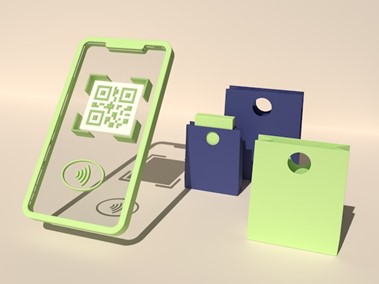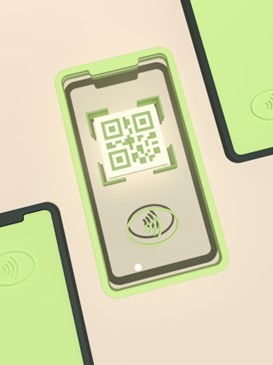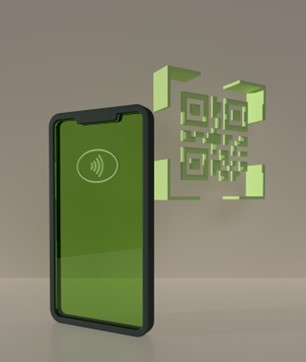
Modern marketing strategies must evolve to meet the demands of savvy consumers who engage with brands across multiple platforms. The traditional boundaries between online and offline marketing are quickly disappearing, and businesses are embracing omnichannel marketing strategies to create seamless customer experiences. One powerful tactic in omnichannel integration is the combination of direct mail with digital channels like social media, email, and personalized online content. This strategy not only builds stronger connections with customers but also drives higher engagement rates, increases conversion rates, and ultimately enhances ROI.
The following article explores how omnichannel integration can elevate marketing efforts. We’ll also touch on how businesses can leverage certain platforms to integrate tangible mailers with digital marketing channels for an even more cohesive experience.
Consumers today are inundated with marketing messages from various sources. Whether it’s through social media, email, or catalogs, the goal is to create consistent, engaging experiences that resonate across channels. Omnichannel marketing ensures that customers receive a unified message no matter where they interact with a brand.
For instance, a consumer might receive a postcard from a business promoting a limited-time offer. After reading the postcard, they may decide to visit the company’s website to learn more, only to find the same offer waiting for them in a targeted email. From there, they might engage with the brand on social media, where they receive an even more personalized experience. This integration of multiple advertising channels helps reinforce brand messaging, ensuring that customers feel valued and understood at every touchpoint.
One of the most effective ways to bridge the gap between physical and digital experiences is through personalized URLs (PURLs) and QR codes. These technologies allow businesses to create a seamless flow from offline marketing to personalized online content.

A Personalized URL (PURL) is a unique web address assigned to each recipient of a mail piece. The PURL typically leads to a custom landing page designed specifically for that individual, often featuring content tailored to their previous interactions with the brand or based on data like their purchase history or preferences.
Another powerful tool for omnichannel integration is QR codes. These scannable codes can be included on advertising pieces to direct recipients to a digital experience, such as a product page, promotional offer, or exclusive video content. Unlike traditional URLs, QR codes offer the added benefit of easy, instant access via mobile devices, allowing recipients to engage with the content immediately.
As the need for seamless omnichannel integration grows, businesses are increasingly relying on platforms like Postreminder.com to help them coordinate mailers with digital channels. The platform offers powerful tools that allow businesses to track, manage, and personalize direct mail campaigns, while also seamlessly integrating those efforts with email, SMS, and social media marketing.
Businesses can automate the creation and mailing of personalized postcards and letters, while simultaneously linking these mailers to online content. The platform also allows businesses to gather data on how recipients are engaging with the mailers, whether they’re scanning QR codes, visiting PURLs, or responding to calls to action, providing real-time insights into the effectiveness of each campaign.
The ability to track recipient actions allows businesses to refine their marketing strategies and make informed decisions about future campaigns. For instance, if certain products or offers generate higher engagement from one group of recipients, marketers can adjust their messaging or offers to optimize future interactions.
Moreover, the integration with email and SMS channels allows businesses to send follow-up messages and reminders, ensuring that the campaign’s message remains top of mind for recipients. This cross-platform approach helps create a cohesive customer experience, making it easier to nurture leads and move them further down the sales funnel.

The integration of direct mail with digital channels using tools like PURLs, QR codes, and platforms such as Postreminder.com offers a range of valuable benefits for businesses seeking to enhance their marketing effectiveness. One of the primary advantages is increased engagement. By directing recipients to personalized online content, businesses provide an easy, streamlined path for consumers to interact with their brand. This personalized experience not only captures the recipient’s attention but also significantly boosts the likelihood of conversion, as tailored content speaks directly to the individual’s interests and needs.
Another key benefit is higher conversion rates. Omnichannel strategies ensure that customers encounter consistent messaging across multiple touchpoints—whether through targeted mail, email, or social media. This continuity of experience fosters familiarity and trust, which in turn encourages action.
The customer experience is also greatly improved through this integrated approach. Today’s consumers expect a seamless interaction with brands across both physical and digital platforms. By merging content, businesses create a cohesive, customer-centric journey. This integrated experience helps build stronger customer relationships, enhances satisfaction, and encourages brand loyalty, as recipients feel understood and valued at each point of contact.
In addition, integrating digital and mail marketing tools provides better data and insights. By tracking how recipients interact with the advertisements, businesses can gather detailed behavioral data. This allows marketers to refine their strategies, understand which content resonates most with their audience, and make data-driven decisions for future campaigns. With real-time feedback, marketers can adapt and optimize efforts to deliver even better results.
Finally, integrating multiple marketing channels is a highly cost-efficient strategy. Omnichannel campaigns that leverage all aspects of marketing often yield a higher return on investment compared to single-channel efforts. By reaching recipients at multiple touchpoints, businesses can maximize their campaign’s impact while keeping costs in check. The ability to target consumers through a variety of channels means a more effective use of resources without significantly increasing spending, ultimately providing better value for the business.
Omnichannel marketing is no longer a luxury—it’s a necessity for businesses that want to engage modern consumers. By combining the physical appeal of physical mail with the immediacy and interactivity of digital channels like social media and email, businesses can create a cohesive experience that drives higher engagement and conversion rates.
These various touchpoints not only increase the chances of immediate conversions but also build long-term relationships with customers, ultimately driving greater ROI for their marketing efforts. Omnichannel integration is the future—combining the best of both digital and traditional approaches to create meaningful, lasting customer experiences.